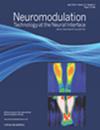骶神经调控疗法泌尿系统和结直肠疾病患者的症状评估:是时候采用综合方法了吗?一项前瞻性单中心研究的结果和发现。
IF 3.2
3区 医学
Q2 CLINICAL NEUROLOGY
引用次数: 0
摘要
目的:骶神经调控(SNM)已发展成为治疗各种盆底功能障碍的干预方法。然而,传统方法主要评估特定学科的症状,可能会忽略整体症状的改善。我们的目的是研究对盆底症状进行更全面的评估是否能加强对SNM试验阶段的评估:2018年3月至2021年12月,一项前瞻性单中心试验(下尿路症状优化研究)对泌尿科(UD)和结直肠外科(CRD)患者的SNM疗效进行了评估,随访12个月。采用日记和患者报告的结果测量法对客观和主观结果进行了检查。通过统计分析来确定治疗成功的预测因素(以患者的总体变化印象表示)。结果:共有 85 名参与者接受了治疗,他们都伴有盆底症状。第一阶段结束后,尿失禁患者和慢性肾功能衰竭患者的所有盆底领域问卷调查结果均有明显改善。虽然在膀胱和排便日记中观察到了改善,但传统的成功标准(日记变量改善≥50%)与患者的整体变化印象并不一致。多个领域的困扰总分绝对值的降低对患者的总体变化印象具有显著的预测作用,优于特定学科的评估。泌尿系统疾病患者可从泌尿系统和盆腔疼痛症状评估中获益,而慢性肾功能衰竭患者则可从泌尿系统和肠道症状评估中获益:SNM在盆底的各个领域都显示出积极的效果,甚至超出了植入的主要预期适应症。仅根据特定学科的症状来选择患者这种相当僵化的方法值得商榷。在试验阶段,如果能对各种盆底症状进行更全面的评估,并强调主观结果测量,就能加强 SNM 的疗效评估:该研究的 Clinicaltrials.gov 注册号为 NCT05313984。本文章由计算机程序翻译,如有差异,请以英文原文为准。
Symptom Assessment of Candidates for Sacral Neuromodulation Therapy With Urologic and Colorectal Conditions: Time for a Holistic Approach? Results and Findings From a Prospective Single-Center Study
Objectives
Sacral neuromodulation (SNM) has evolved as a therapeutic intervention for various pelvic floor dysfunctions. However, the traditional approach primarily assesses discipline-specific symptoms, potentially overlooking holistic symptom improvement. We aimed to investigate whether a more comprehensive evaluation of pelvic floor symptoms enhances the assessment of SNM’s test phase.
Material and Methods
A prospective single-center trial (Optimization of Lower Urinary Tract Symptoms study) assessed SNM efficacy from March 2018 to December 2021 in patients from the urology department (UD) and colorectal surgery department (CRD) with a follow-up of 12 months. Objective and subjective outcomes were examined using diaries and patient-reported outcome measures. Statistical analyses were conducted to determine predictive factors for treatment success, expressed by the patient global impression of change. SPSS 29.0 was used.
Results
A total of 85 participants were included, displaying concomitant pelvic floor symptoms. After the first phase, significant improvements on all pelvic floor domains questionnaires were seen for both patients from UD and those from CRD. Although improvements were observed in bladder and bowel diaries, the traditional criteria for success (≥50% improvement in diary variables) did not consistently correlate with the patients' global impression of change. The absolute reductions in bother sum scores from multiple domains were significant predictors for the patients' global impression of change, outperforming discipline-specific assessments. Patients from UD benefit from both a urologic and pelvic pain symptom evaluation, and those from CRD, from both a urologic and bowel symptom evaluation.
Conclusions
SNM shows positive effects across various pelvic floor domains, even beyond the primary intended indication of implantation. The rather rigid approach of patient selection of discipline-specific symptoms alone can be questioned. A more comprehensive evaluation encompassing various pelvic floor symptoms with the emphasis on subjective outcome measures could enhance SNM’s efficacy assessment during the test phase.
Clinical Trial Registration
The Clinicaltrials.gov registration number for the study is NCT05313984.
求助全文
通过发布文献求助,成功后即可免费获取论文全文。
去求助
来源期刊

Neuromodulation
医学-临床神经学
CiteScore
6.40
自引率
3.60%
发文量
978
审稿时长
54 days
期刊介绍:
Neuromodulation: Technology at the Neural Interface is the preeminent journal in the area of neuromodulation, providing our readership with the state of the art clinical, translational, and basic science research in the field. For clinicians, engineers, scientists and members of the biotechnology industry alike, Neuromodulation provides timely and rigorously peer-reviewed articles on the technology, science, and clinical application of devices that interface with the nervous system to treat disease and improve function.
 求助内容:
求助内容: 应助结果提醒方式:
应助结果提醒方式:


